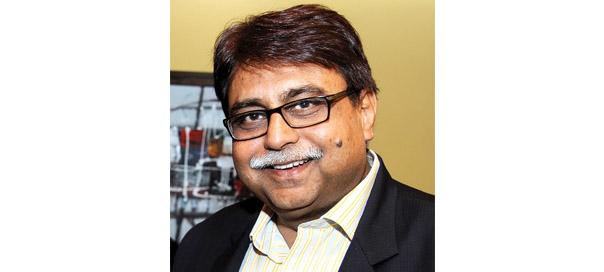Print advertising by political parties is a thing of the past in the age of Twitter, Facebook and blogs to connect to voters
By Jwalant Swaroop
Elections for the 16th Lok Sabha are imminent, but it seems that the Print medium has lost the battle of advertising share to other media even before the verdict is out for the political parties. This year, while news television channels, social media, outdoor and radio milked the holy cow of elections well enough, it has been a case of sour grapes for newspapers per se. We hardly see any election advertising in newspapers while all other media are running full inventories.
What has happened to Print this time? Actually, all political parties followed the carrot and stick policy, brandishing big deals before newspapers, but postponing them day after day. With a few days left to the first round of polling, it is clear that parties’ newspaper usage will be very limited, perhaps a full page ad in the largest daily on a poll day.
So is it time to conclude that the build-up of campaigns like ‘Har Haath Shakti, Har Haath Tarraki’ and ‘Ab ki Baar, Modi Sarkar’, or ‘Dil Se Hain Mulayam….’ of the Congress, BJP and SP respectively, is being achieved in a unique media planning experiment – minus newspapers? This being the costliest election of all times, and with media budgets running in excess of Rs 400–500 crore, newspapers are deeply hurt. Most advertisement heads of newspaper organizations are keenly waiting for leftovers from the media budget and hoping to get one or two ads before polling begins. Surprisingly, a medium which has traditionally been a favourite of political parties has been dropped like a hot potato this time, with no remorse or worry of it getting hostile in the critical time of elections.
To reason this out, I see a 4R syndrome, born out of the behaviour of newspapers themselves.
SYNDROME 1
RATE: Media buyers and negotiators felt that print rates have actually hit the ceiling. They have questioned the political premium applied on rates. Newspaper sales stalwarts meanwhile, are oblivious of the changing environment, and do not budge on rates. Arrogance is a big issue. The attitude of newspapers is: “They need us more than we need them, so why should we lower our rates?” Greed is another factor – elections come once in five years, so newspapers with big-ticket events want to encash all favours from the political class in one go without being sensitive to the budget constraints of negotiators and buyers. Newspapers’ loss is gain for all other media.
SYNDROME 2
REACH: The reach of newspapers has been questioned for the first time. It seems political parties studied the geo-political influence of each media vehicle and took a conscious decision not to depend on Print as much as they had done in the past. This has reset the weights for each medium completely. Television news channels have produced more political celebrities than Print, and it seems this is the time to return the favour. Additionally, to catch Gen X on digital media is most sought-after. Reliable measurement tools and a 360-degree digital approach have delivered both higher audiences and impact.
SYNDROME 3
RELEVANCE: Today, political stories break on Twitter, Facebook, Google Hangout and other social media. Earlier, the political class had to beg even the junior most sub-editor to get his press release published. But now, news is being created on Twitter, Facebook and blogs by the contestant himself. Print is only following it up. Each politician now understands that the voter is connected to these social media 24x7, and spending on newspapers is a huge cost to pay for a medium having below 15 minutes consumer engagement once a day, that too with huge uncertainty about readership and circulation. It is a big challenge before publishers to make newspapers relevant for those who have always believed that an election is won only on the power of newspapers. Interestingly, news as a genre attracts more eyeballs on television during elections. It is reported that during this period, some well known FMCG brands have committed big budgets to news channels anticipating increased viewership. This is making TV news a hot property during elections.
SYNDROME 4
RESPECT: I feel that business of ‘paid news’ in newspapers during elections has actually tarnished the image of the medium as a whole. Neither the reader nor the politician are morons. A taken-for-granted attitude for readers actually demeans the value of the newspaper, both in the eyes of the reader and the political class. It is tough to imagine that newspapers could be dumped like this during the elections. Restrictions and monitoring of paid news by the Chief Election Commissioner has compelled publishers to be cautious, but have they stopped the practice? One needs to investigate deeper. A friend commented on social media that ‘Responsibility’ is the fifth ‘R’ syndrome ailing newspapers. Do they present ‘Responsible’ news? It is definitely an alarming sign, and has taken many newspaper stalwarts by surprise. ‘Yeh Election Kuchh Kehta Hai Boss’ (This election is saying something) – listen to it, folks! It is time to introspect on these realities and reinvent the medium before it is dumped like any ageing member in a political party. Newspapers are here to stay, but only by being socially aware to deliver responsible news.
(The author is CEO, Oshoyana Consultants)
Feedback: jwalant@oshoyana.com























